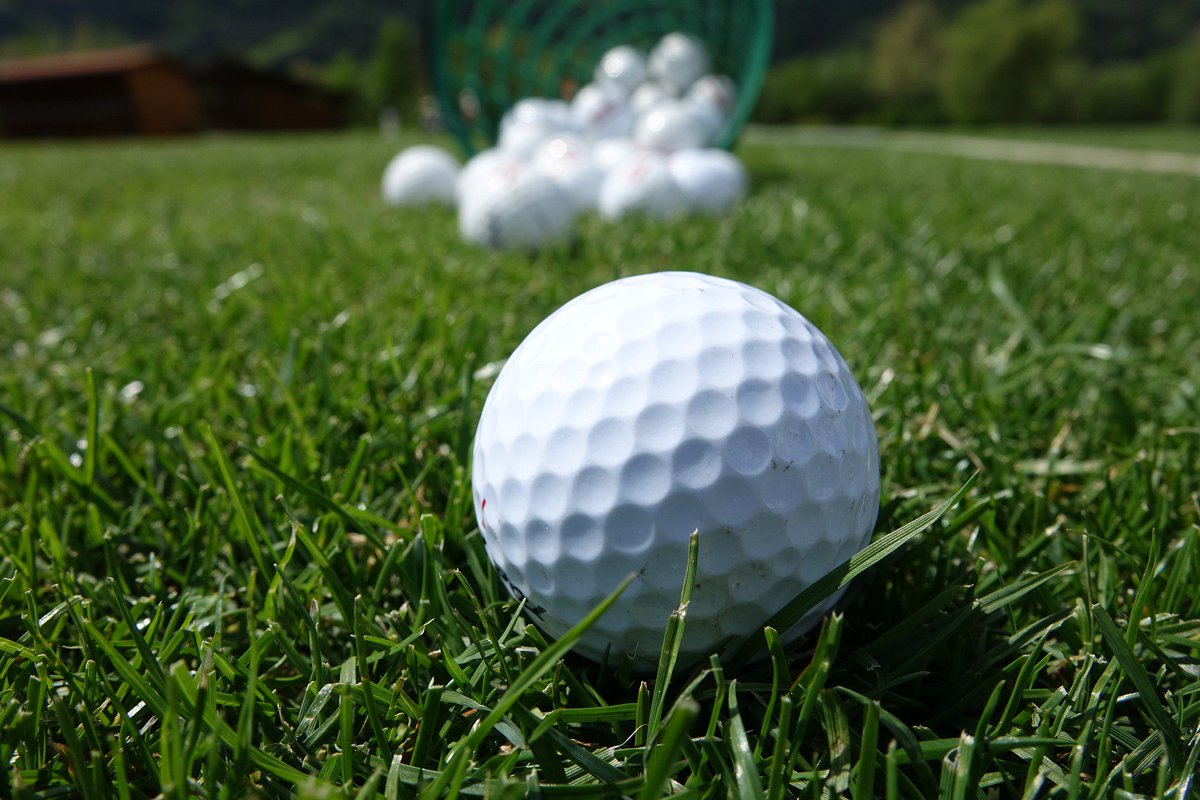
WHY DO GOLF BALLS HAVE DIMPLES?
Every golfer has his or her own preferred brand of golf balls and always uses the same one, knowing that trying anything else may adversely affect their game. While golf balls do vary, once you find a make you’re comfortable with, you’ll want to stick with it.
While there are differences in golf balls, there are also regulations in place regarding their size and weight, but not for the number of dimples on a ball. The dimples are important, and they can make your ball go faster or slower.
A History of Golf Balls
Back at the beginning of golf, the balls were produced using wood. Beech was the most famous wood and each ball was molded by a craftsman. Thus, these were never totally round and exceptionally hard, so they weren't in every case simple to control on the course.
Featheries
The principal upgrades to the golf ball didn't occur until the seventeenth century, yet they were as yet inconsistent to play with. These balls were called 'featheries' on the grounds where they were loaded down with wet winged creature quills. As the quills dried, they lightened out and filled within the ball. The outside of the ball was produced using 3 bits of calfskin which were sewed together. Much the same as the wooden plan, because of the manner in which they were made, they weren't round and weren't anything but difficult to control. To exacerbate the situation, featheries would absorb the water in the event that it was coming down.
Featheries were over-the-top expensive to make and purchase, so at the time it implied the game was just played by the rich
Guttie
It wasn't until 1848 that the less fortunate had the option to appreciate the game too. Robert Adams Paterson planned the gutta-percha ball in 1848, known as a 'guttie'. This was the principal golf ball to be shaped and this procedure implied the balls were a lot less expensive to make.
These golf balls were made by liquefying gutta-percha tar, which was poured into molds and afterward pounded fit as a fiddle. This technique made little imprints in each ball and individuals saw that the scratched balls were going farther than smooth golf balls. This was the forerunner to the dimples the balls presently have.
Modern
The modern golf ball was created by accident when Coburn Haskell wound rubber bands together and noticed that they absorbed the shock of being bounced and hit. This now forms the basis for modern golf ball.
As the game has grown in popularity, there are also regulations about golf balls, and we’ll take a look at just a few of them.

About Golf Balls
Size
The size of a golf ball affects the distance it travels. The smaller a ball is, the less wind resistance it faces, and the farther it goes. According to the United States Golf Association, the USGA, the diameter of a golf ball must not be less than 1.68 inches, or 42.67 mm. While a ball can be bigger than this, you wouldn’t want it to be much larger, as it would not travel so far.
Weight
As with size, the weight of a golf ball plays an important role in the game. A heavier ball will go farther, but it may be harder to control. A lighter ball will not go as far, but it is easier to control.
The USGA states that the ball should not weigh more than 1.62 ounces or 45.93 grams
Speed
Many things affect the speed of a golf ball so just how fast can they go?
When you hit your ball off the tee, it will travel somewhere around 160 miles per hour. The force of the ball can also cause it to spin an incredible 3000 times a minute. The fastest recorded shot was Ryan Winther whose ball reached a speed of 235.1 miles per hour, 378.35kph.
Dimples
The dimples on the golf ball are there for more than just decoration.
Dimples were added to golf balls in 1906 when William Taylor recognized that they help reduce wind resistance and improve the distance and height that a ball can travel. The dimples can increase these by up to 115%, and so can have a big impact on your game. There are regulations, saying that a golf ball must have dimples and regarding their depth, but there is no limitation to the number of dimples a golf ball can have. Most will have between 300-500, with an average of around 330. The most dimples that have been counted on the ball were 1,070.
Shape
Golf balls are, clearly, round, however, did you realize they can change shape the more you use them?
At the point when you jump start, this can squeeze the golf ball. As the center is made of elastic, this can make it lose its shape as the elastic is compacted when the ball is hit. Despite the fact that it will decompress, it won't exactly return to its unique shape, and after some time you will see a drop in the presentation of the ball as it is not, at this point completely round.
While most balls utilized in sports are brimming with air, golf balls are unquestionably more mind-boggling. From the mind-boggling plan of its center to its external covering, all aspects of it are intended to give the most extreme execution and control. The plan is continually being refined too, and since the beginning of the twentieth century, in excess of 5000 licenses have been allowed for golf balls.
We should trust they generally keep their dimples.
Interesting golf ball facts
- Next time you lose your golf ball in the lake, you may be consoled to realize that 300,000,000 golf balls are lost each year in America alone.
There are golf balls on the moon. Alan Shephard hit three balls during the Apollo 14 strategy in 1971, and they are largely still there.
